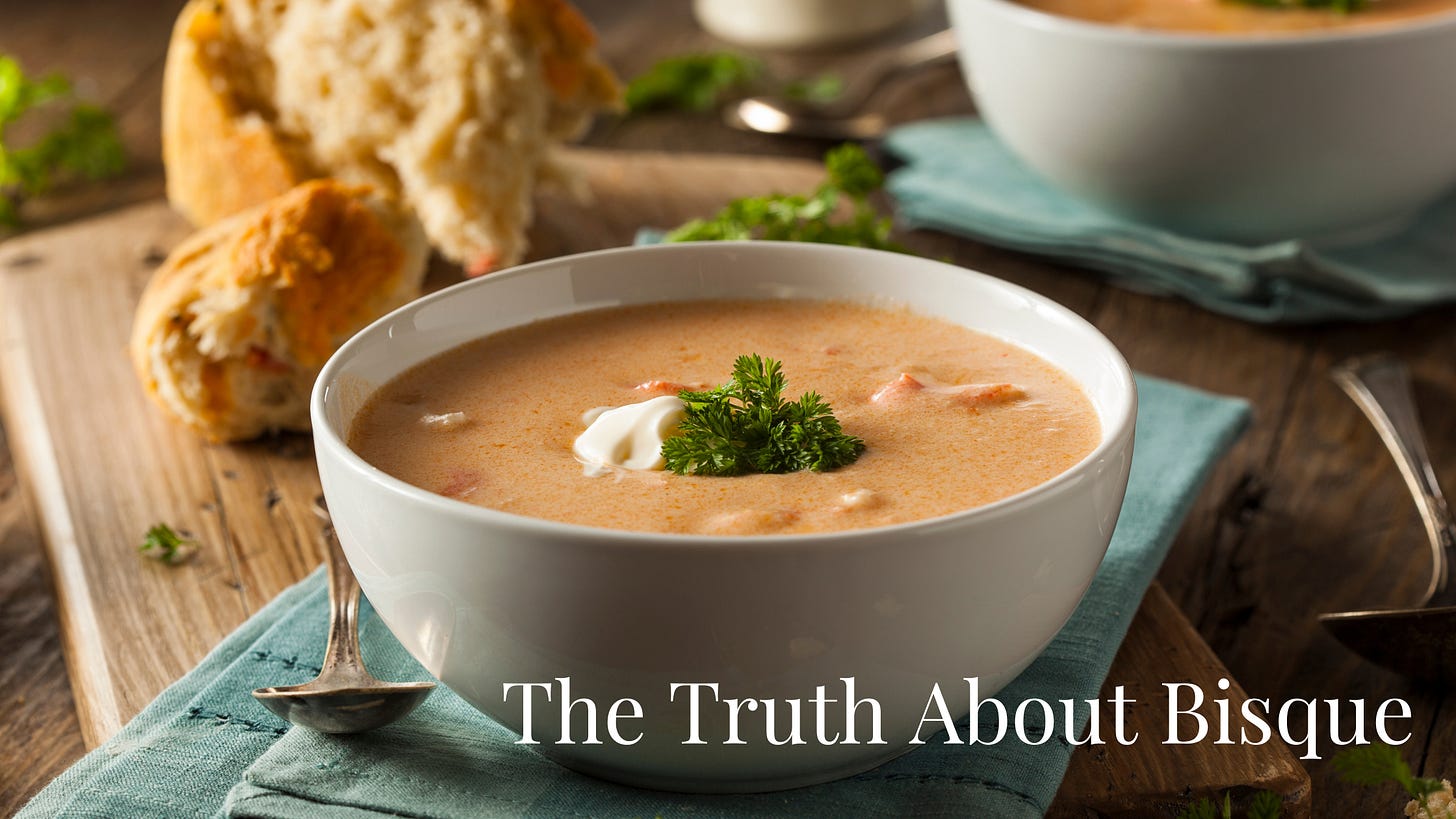The Truth About Bisque: Separating Tradition from Mislabeling
Think you know what makes a bisque? Discover the truth behind this French classic and why so many 'bisques' today miss the mark entirely.
One of my favorite soups that is so widely mislabeled and misunderstood in creation is the bisque. You see “bisque” in the store so often linked to sweet potato, squash, or any number of other vegetables. But like with a good majority of foods, there is only one way to make a bisque, and it is not with a vegetable, chicken, pork, or beef base.
What Bisque Actually Is
Traditionally, bisque is a rich, creamy soup rooted in French culinary traditions and made with a base of shellfish such as lobster, crab, shrimp, or crayfish. Authentic bisque follows a specific process that gives it its luxurious texture and depth of flavor:
Shellfish Base: The soup begins with roasted shellfish shells that are simmered to create a deeply flavorful stock. This shell-based stock is the soul of any true bisque.
Creamy Consistency: Bisque is thickened with a combination of roux, rice, or cream, which contributes to its signature velvety texture.
Pureed and Strained: The soup is typically pureed and strained to achieve a smooth, silky finish. Some finely strained solids may be included for added richness.
The term "bisque" originates from the French word biscuit (meaning "twice-cooked"), which reflects the process of roasting the shells before creating the soup and then cooking it a second time to refine the flavors. This culinary tradition dates back to 17th-century France, where it was considered a sophisticated and labor-intensive delicacy. The dish gained popularity in aristocratic circles and was seen as a symbol of refinement and skill in French haute cuisine.
In French tradition, the preparation of bisque embodies the concept of terroir, the idea that food reflects the unique characteristics of its place of origin. By using local shellfish and precise techniques, French chefs crafted bisques that celebrated their coastal regions and showcased their culinary expertise.
How Bisque Is Misunderstood
Over the years, the term “bisque” has been applied to a wide variety of creamy soups, leading to confusion about what it actually is. Many of these soups stray far from the traditional shellfish origins and preparation methods. Common examples of mislabeling include:
Vegetable-Based Soups: Tomato, sweet potato, butternut squash, or roasted red pepper soups are often labeled as “bisque.” While these soups may be creamy and pureed, they lack the foundational shellfish stock.
Chunky Soups: Authentic bisque is smooth and velvety, yet some dishes labeled as bisque contain chunks of seafood or vegetables, which makes them closer to chowders or stews.
Non-Shellfish Proteins: Chicken, pork, or beef-based soups labeled as bisque deviate from the traditional definition entirely.
Unlock the rest of this post to dive deeper into the rich history of French culinary traditions and discover the beauty of an authentic bisque. Subscribers will also gain tips on identifying true bisques and how to savor their unique preparation techniques.
[Subscribe to continue reading!]
Keep reading with a 7-day free trial
Subscribe to The Earth & Flame to keep reading this post and get 7 days of free access to the full post archives.


